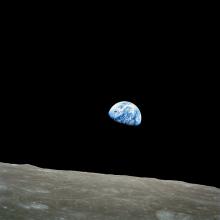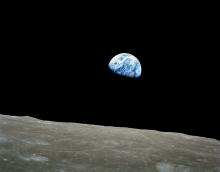Listen to today's episode of StarDate on the web the same day it airs in high-quality streaming audio without any extra ads or announcements. Choose a $8 one-month pass, or listen every day for a year for just $30.
You are here
Earth at Perihelion
It might be winter here in the northern hemisphere, but the Sun is biggest and closest to us for the entire year today. Earth is at a point in its orbit called perihelion. The Sun is about 91.4 million miles away – about one and a half million miles closer than average.
Earth’s orbit isn’t a perfect circle. Instead, it’s an ellipse – a shape that looks like a slightly flattened circle. So over the course of a year, the Earth-Sun distance varies by about three percent. The oceans and atmosphere distribute heat around the planet, so the changing distance doesn’t cause a change in global temperatures.
The date of perihelion isn’t fixed. Instead, it shifts forward by an average of about one day every 58 years. That’s because Earth “wobbles” on its axis like a gyroscope that’s running down. About 800 years ago, Earth was closest to the Sun on the winter solstice, in December. And about 4300 years from now, it’ll be closest on the spring equinox, in March.
The changing distance to the Sun doesn’t create the seasons. Instead, the seasons are caused by Earth’s tilt on its axis. But the distance to the Sun does have an impact on the seasons. Earth moves fastest in its orbit when it’s closest to the Sun, and slowest when it’s farthest away. That means the seasons are different lengths. In the northern hemisphere, winter is the shortest season – about five days shorter than summer, when Earth is farthest from the Sun.
Script by Damond Benningfield






